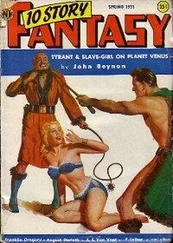‘A bunker,’ Reacher said.
‘Right,’ Sands said. ‘Only a Cold War bunker. Not one that’s full of sand and golf balls.’
‘Fisher thought the spy brothers did nothing while they were in Tennessee,’ Reacher said. ‘She was wrong. They supervised the building work.’
‘And when they left their sister took over,’ Sands said. ‘Klostermann’s mom. They took her off the records so no one would make the connection. She married Heinrich Klostermann and the house went in his name. Like money laundering, almost. Only with real estate.’
‘Then their son Henry took over when they died.’
‘Which is why he still lives there. You can’t sell a house with a Cold War bunker in the back yard without raising a few eyebrows. Not that the bunker can be much use these days.’
‘Until now. Come on. We need to head over there and recce the place.’
‘We can make a start from here.’ Sands picked up her phone and prodded and pinched at the screen until a satellite image of the Spy House’s yard was displayed. She zoomed in as close as she could but there still wasn’t much to see. Just an expanse of flat, scorched grass on the far side of a row of trees. The kind of field you might keep a donkey in if you didn’t like it very much. There was only one other feature. A set of concrete steps. They were at the end of a dirt driveway, and appeared to descend directly into the raw earth. ‘There’s not much to it. I thought there’d be hatchways and ventilation pipes and water tanks. Things we could use to get in.’
Reacher shook his head. ‘It was built for people to shelter in after a nuclear war. Everything will be self-contained. The water, the air, it will all be treated and recirculated. By machines. Deep underground. There could be some kind of umbilical connection to the house, I guess. For power. Maybe water. To keep things ticking over during peacetime. Or for maintenance. But probably no other contact with the outside world at all.’
‘We should let Wallwork know. He’ll need explosives. Digging equipment. Tunnelling machines.’
‘He will. If the place is locked down. I’ll call him from the car. But then I want to see this bunker for myself. There’s one thing that’s on our side.’
‘What?’
‘They don’t know we’re coming.’
Sands stopped the car in front of Klostermann’s gate. She looked at Reacher, crossed her fingers, then stretched out and hit the intercom button.
There was no reply.
Hope for the best .
She tried again.
Nothing happened.
The gate was made of iron. It was eight feet high. And it was the kind that slides to the side so there are no hinges. No join in the centre. No weak spots at all. So there was no chance of breaking it down. Or forcing it open. If no one operated it for them, the only way through was to enter the correct access code.
A four-digit code has ten thousand permutations. They needed to narrow the odds, so Reacher climbed out and scooped up some dirt from the base of the wall. He ground it into fine powder between his finger and thumb. Blew it very gently across the keypad. Blew again to remove the excess. And saw that a tiny trace of dust had stuck to three of the keys. The zero, the two, and the four.
Now there were eighty-one permutations.
In Reacher’s experience people often used dates as code numbers. They’re easy to remember. And they often have some kind of sentimental significance. In which case the first digit would have to be zero. The second would have to be two or four. And the final pair could not both be zero. Now he was down to ten possibilities. Or possibly only one. Reacher remembered the black Mercedes. The neighbour, whose land was earmarked for the rally. Who believed that Klostermann was a fellow Nazi. Reacher entered 0420. Hitler’s birthday.
The gate started to move.
Reacher jumped back into the car and Sands drove through. She headed away from the house. Into the scrubby field. To the top of the steps they’d seen on the satellite image. Two cars were already parked there. A black Lincoln Town Car. The one the Moscow guy had been driving. And another Chevy Malibu. This one was red. Sands stopped right next to it.
Reacher got out and headed down the steps. There were twenty-six. Made of concrete. Pale and flaky and pitted from age and the weather. A vertical drop of maybe twenty feet. Leading to a metal door. Painted grey. It was dull. Featureless. Solid. Reacher pushed it with both hands. It didn’t move. He leaned his shoulder against it, braced his feet on the bottom step, and shoved again. Harder. The door didn’t give even a fraction of an inch.
Reacher climbed back up and got into the car. Sands drove across and parked in front of the house. They crossed the porch, approached the door, and Reacher knocked. There was no response. He figured there was no point looking for a hidden key so he landed a solid kick right below the handle. The door swung open, scattering pieces of frame across the tiled floor. Reacher crunched over them and turned to his right, alongside the staircase. Sands followed. There was a door at the far end. It led to a flight of stairs, heading down. They descended and came out into a basement. Reacher found the light switch. There were wooden shelves along the left-hand wall, stacked high with suitcases and cleaning supplies and all kinds of cardboard boxes and plastic tubs. There was a furnace on the right along with a bunch of other air handling equipment, all feeding into rectangular metal ducts that disappeared into the ceiling. And a little further along, set into the wall, was a pair of grey metal breaker boxes.
Reacher ducked down to avoid the joists and made his way across to them. He opened the first one. A printed label inside said HOUSE . The label in the second one said simply PANEL 2 .
‘A house this size doesn’t need two panels,’ Reacher said. ‘The second one must feed the bunker. When it’s not running its own generator.’ He pointed to the master switch. ‘Give me three minutes, then throw that. It should cut them off. Then they’ll send someone to investigate.’
‘What if they don’t?’ Sands said. ‘What if their generator is working, or they have a battery backup? Or the panel is for something else altogether?’
‘Then we wait for Wallwork’s people. But we have nothing to lose by trying. Throw the switch, then wait for my text. After that, get clear. Find somewhere safe to wait.’
Reacher went back outside and walked across to the bunker. He stayed at ground level, looped around the stairwell, and stopped in a spot above the vertical threshold of the door where he would be invisible to anyone who came out. He took the SOCOM from his waistband. Screwed the suppressor back into place. And waited.
The clock in his head told him the three minutes were up. Nothing happened. Another minute passed. And another. Then Reacher heard the screech of metal on metal, followed by the slap of heavy footsteps on concrete. The back of a head appeared. It was bald. With little ears stuck on the sides like an afterthought.
The guy from Moscow. Who had tried to force Reacher into the trunk of the Town Car.
Reacher waited until the guy got to the top of the steps, then raised his gun.
‘Hey,’ Reacher called out.
The guy stopped and turned around. Reacher moved closer, skirting the stairwell, keeping the gun levelled on his chest.
‘The woman you call Natasha,’ Reacher said. ‘You brought her here?’
The guy didn’t reply.
‘Describe the layout of the bunker.’
The guy stared back at Reacher, but didn’t speak.
‘Who is down there? How many?’
The guy was silent.
‘You’re out of time.’ Reacher nodded towards the Town Car. ‘Open the trunk.’
Читать дальше












